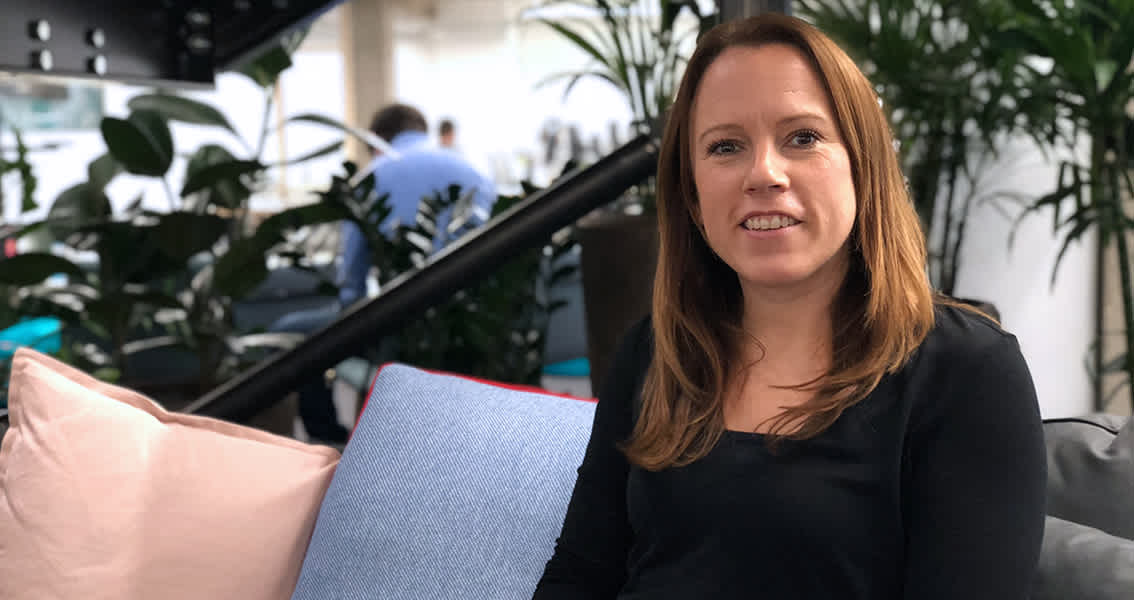GC women discuss supporting women in tech
Last editedApr 20233 min read
The problem of gender diversity in the tech industry is not new and there are many businesses and charities doing great work to make the industry more inclusive. For example, Code First Girls' 2020 campaign has already trained 5000+ women how to code for free and the newly-launched Fintech Parity Pledge encourages those working in events to only speak at, attend, and organise events that promote diversity.
Despite the success of these campaigns, there is still a long way to go, with some organisations predicting that the gender gap will worsen if more is not done. According to Code First Girls, female programmers and software developers made up only 3.9% of tech and telco professionals in the UK in 2017, down from 10% in 2007.
To celebrate International Women’s Day, we sat down with some of the women in GoCardless’ Product Development team to hear about their experiences as women in tech (and fintech, a sector in which women represent only 29% of the workforce), and to get their thoughts on what can be done to encourage more women into the industry.
Starting out on the right foot

The tech gender gap starts at school:
Research by the WISE Campaign found that at the age of 16, 35% of girlschoose to continue studying maths, physics, computing or a technical vocational qualification, compared to 94% of boys.
A Microsoft survey of 1000 girls and young women, pointed to the positioning of these subjects and a lack of female role models as a cause. 23% of participants felt the subject were geared towards boys and 62% felt there could be more encouragement from female professionals in the industry.
“Increasing the number of women in tech needs to start in education,” says GoCardless Product Manager Juliet. “Choosing the right subjects at school will help you gain the qualifications needed to enter the world of tech. At the moment, men are more likely to study subjects which lead them into tech careers; this means women might need to re-qualify to get the same roles."
Even those who do choose a technical subject, are still less likely than their male counterparts to choose a technical career. US research found that of those who go on to gain degrees in science, technology, engineering and maths subjects, only 26% of female graduates work in a technical career compared to 40% of men. That means that qualified women are turning away from the field before they even get started.
Why is this?
Commentators cite a range of reasons, from a lack of female role models and male biased recruitment, to a lack of support for flexible working and parental leave.
The difference in confidence levels between male and female job-seekers is also often cited as a cause, not only in tech but across all sectors. A Hewlett Packard report found that most men apply for a job when they meet 60% of the specification, where most women only apply if their skills meet 100% of the criteria.
GoCardless software engineer, Bianca, suggests that the lack of female role models in tech means some women “feel like they need to prove themselves in the first instance, before they will be taken seriously.”
Liz, a Business Intelligence Analyst for GoCardless, adds: “I’m pleased to say that I have never worked somewhere where I feel like I have been treated differently because of my gender, but I have noticed that there tends to be more men than women working in data and analysis teams.”
How can employers and organisations promote diversity in tech?
“Women in tech groups and meetups definitely help,” says GoCardless engineering intern, Maartje. “They help to network and are a great signal to the world that we exist! If your employer supports these types of groups then ever better.”
GoCardless software engineer, Grace, adds that more education about possible career paths is important. “In education and beyond, it’s important that women are aware of the different paths that can lead to a career in tech. It’s not always what you would assume! Even within GoCardless, we have people with politics degrees, and people that started in customer support who now work as software engineers. It’s important to be open about that and for businesses to promote career flexibility.”

GoCardless’ Liz hadn’t considered a career as an analyst and began her career in sales: “I realised that sales wasn’t really for me early on, but it wasn’t until I started working in sales admin that I realised that I could take on a role in data and analytics!”
When it comes to attracting women in tech, gender neutral recruitment is important. The language used in job descriptions, for example, can be unconsciously gender biased. Many companies (like us!) are now making use of software tools like Textio to make sure job postings are gender-neutral.
At GoCardless, women currently make up 34% of the workforce. “When it comes to the number of female employees, we’re a little bit above average for the fintech sector, but there is a long way to go. We're looking at how we can attract diverse and female candidates through different recruitment channels - such as promoting job vacancies on Ada’s List,” says Nicola.
GoCardless engineer, Bianca, agreed that a gender-neutral recruitment process makes a company more appealing, especially during the interview process. “I appreciate being considered for my skills and not my gender,” she said, “I would hate for women to be offered a job to fill a quota”.
For product manager Juliet, senior female role models are important, as is a culture that is accepting of flexible working, and supportive of shared parental leave.
While many take this as a given, the BBC recently drew attention to some of the issues women have faced returning to work after maternity leave. At GoCardless “culture is hugely important and flexible working hours are a key part of that. We really support people to fit work around their lives - I’m always amazed at how many new hires are so surprised at this.” says GoCardless VP Marketing Nicola Anderson.

